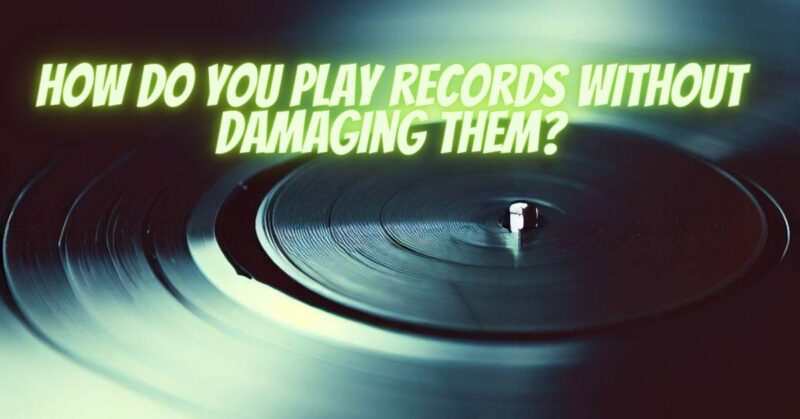Playing vinyl records is a cherished experience that offers a direct connection to the past while delivering rich, analog sound. However, improper handling or usage can result in irreversible damage to your vinyl collection. This article aims to guide you through the steps to play records without causing harm, ensuring that you enjoy the beauty of vinyl while maintaining the integrity of your precious collection.
Selecting the Right Equipment
Choosing the right record player is the first step toward playing vinyl records safely. Look for a player with the following features:
- Adjustable Tracking Force: Ensure your record player allows you to adjust the tracking force—the pressure exerted by the stylus on the grooves. Follow the manufacturer’s recommendations for your specific cartridge to prevent excessive wear.
- Playback Speed Control: A player with accurate playback speed adjustment ensures that your records are played at the correct RPM (revolutions per minute), avoiding pitch issues and damage.
- Anti-Skate Control: Anti-skate mechanisms counteract the tendency of the tonearm to pull towards the center of the record. Proper anti-skate adjustment enhances tracking accuracy and prevents groove damage.
Handling Records with Care
Proper handling of records is crucial to avoiding scratches and contamination:
- Hold the Edges: Always handle records by their edges to minimize the risk of touching the playing surface.
- Clean Hands: Wash and dry your hands before handling records to prevent oils, dirt, and debris from transferring onto the vinyl.
- Using Inner Sleeves: When not playing a record, store it in its original inner sleeve to protect against dust and static buildup.
Cleaning Before Playback
Cleaning records before playing is essential for maintaining sound quality and preventing wear:
- Carbon Fiber Brush: Use a carbon fiber brush to gently remove dust and debris from the record’s surface before each play.
- Wet Cleaning: Periodically clean records using a vinyl record cleaning solution and a microfiber cloth or a record cleaning machine. This deep cleaning prevents buildup of dirt that could affect sound quality.
Setting Up the Turntable
Correctly setting up your turntable enhances playback quality and prevents damage:
- Level Surface: Place your turntable on a level surface to ensure the stylus tracks evenly across the grooves.
- Proper Tracking Force: Adjust the tracking force according to the cartridge manufacturer’s specifications to prevent excessive groove wear.
- Calibrate the Anti-Skate: Proper anti-skate calibration ensures the stylus tracks accurately and avoids unnecessary strain on the grooves.
Replacing Needles and Cartridges
Stylus replacement is crucial for preserving sound quality and preventing record damage:
- Follow Manufacturer Guidelines: Replace stylus and cartridges according to the manufacturer’s recommended intervals to maintain accurate tracking and sound quality.
- Compatibility: Ensure replacement styluses and cartridges are compatible with your turntable to prevent unnecessary strain on your records.
Playing vinyl records is a rewarding experience that requires a balance of care, attention, and proper equipment. By following these guidelines and handling your records with respect, you can relish the rich sound and nostalgia that vinyl offers while preserving your collection’s value and longevity. Remember, each record carries not only music but also a piece of history—playing them responsibly ensures that this treasure remains intact for generations to come.


